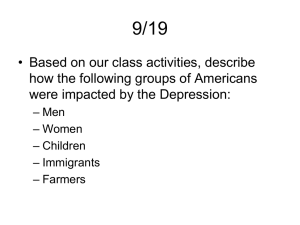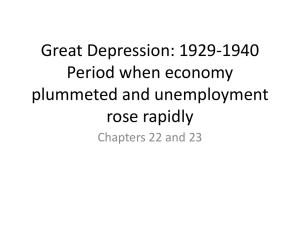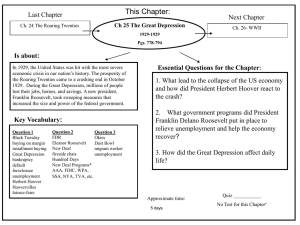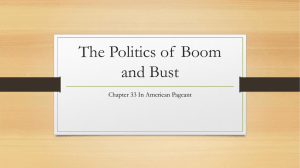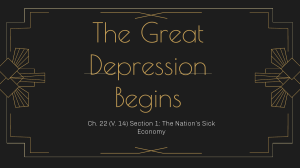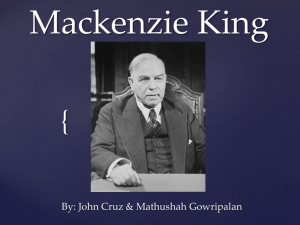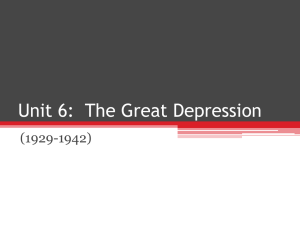14 sections 1 and 2 The Nations Sick Economy.ppt
advertisement
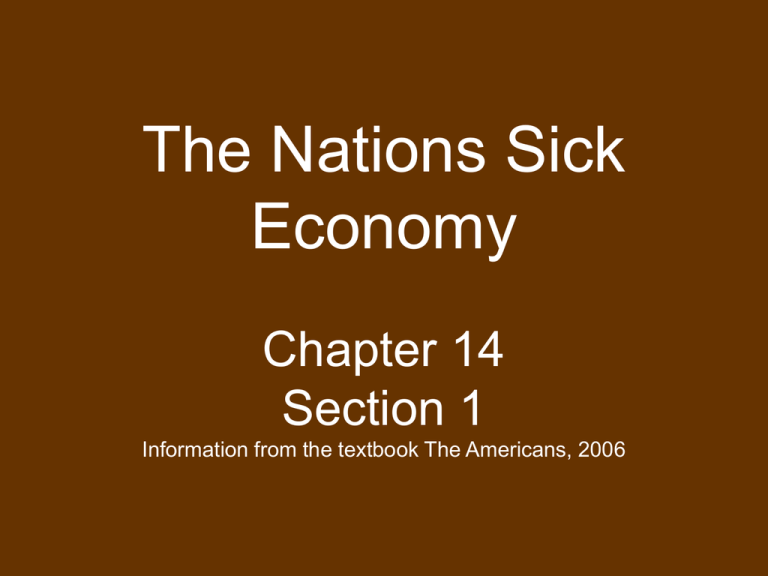
The Nations Sick Economy Chapter 14 Section 1 Information from the textbook The Americans, 2006 Industries… • Steel, railroad, textiles were barely making a profit • Decreased demand for Mining and lumber, autos, construction and consumer goods • Housing and related industries show “slowing” Agriculture • Farmers increased supply which caused a decrease in price and a decrease in their income • Many farmers lost their farm Election of 1928 • Herbert Hoover (Rep) vs. Alfred E. Smith (Dem) • Hoover wins! Stock Market • Many Americans were buying stock. • Dow Jones Industrial Average –A measure based on the stock prices of 30 representative large firms that trade in the NYSE Stock Market • “Bull Market” led to more people investing in stock • Speculation (hoping to turn a quick profit) • Buying on the Margin (making a down payment but borrowing the balance to buy stock) Black Tuesday • October 29 • Shareholders sold 16.4 million shares of stock (and many more didn’t sell) • People stuck with debt The Great Depression • 1929-1940 • 11,000 banks failed by 1933 –People withdrew money and banks had invested in stock (so they also lost money) The Great Depression • GNP decreased by half • Unemployment up to 25% • Many who were still employed faced pay cuts and reduced hours Hawley-Smoot Tariff Act • Set a high tariff • Resulted in decreased amount of imports –Foreign countries weren’t earning money and couldn’t afford to buy US goods. • Decreased demand caused increase in unemployment • Foreign countries also increased tariffs Causes of the Great Depression • Tariffs and war debt • Farming crisis • Availability of credit • Unequal distribution of income Hardships and Suffering During the Depression Chapter 14 Section 2 Information from the textbook The Americans, 2006 Cities • Unemployment • Evictions • Shantytowns • Soup kitchens • Bread lines • Racial violence Rural Areas • Farmers could grow food for families • Many farmers lost their land • Dust Bowl –Drought in the 1930s –Many moved from drought stricken states to California Men • 300,000 transients or “hoboes” wandered the country Women • Working women were resented –Jobs were scarce –Married women should stay at home and let men have jobs Children • • • • Health problems from poor diets School year shortened Working to help earn money “Wild boys” – left families in search of jobs • “Hoover tourists” –Traveled the country by train –24,647 trespassers killed –77,171 injured Social and Psychological Effects • Suicide rate increased • More people were admitted to mental hospitals • Many people helped others that were in need

